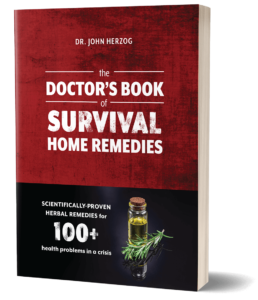
Introduction
Echinacea is a popular herbal remedy used for boosting the immune system and treating various illnesses. It has been used by Native Americans for centuries, and recent scientific studies have shown that it does indeed possess some medicinal properties. So lets read on about the medicinal properties of echinacea
Types of Echinacea
Echinacea is a common garden flower that also grows wild in many places and is often grown in gardens simply for its beauty. It has several sub-species. The most commonly used species of echinacea for medicinal purposes are Echinacea purpurea, Echinacea angustifolia, and Echinacea pallida. Of these three varieties, it is the purple coneflower, Echinacea purpurea, that is most commonly used in herbal remedies.
Medicinal Qualities
It contains many compounds, including alkamides, caffeic acid derivatives, polysaccharides, polyacetylenes, and glycoproteins, all of which have been shown to possess benefits for the immune system. In particular, echinacea was found to increase the number of white blood cells (T-cells), which help fight off infection.
Alkamides
Alkamides are a type of fatty acid found in echinacea that have been shown to have anti-inflammatory and antioxidant properties. Studies suggest that these compounds help reduce inflammation, which can reduce the severity of illnesses such as colds and flu.
Caffeic acid derivatives
Caffeic acid derivatives are another active component of echinacea that have been found to possess immunity-boosting properties. Studies suggest that these compounds stimulate the production of cytokines, which are molecules that help regulate the body’s immune system.
Polysaccharides
Polysaccharides are a type of complex sugar found in echinacea that have been shown to activate the immune system and increase its ability to fight off infections. Studies suggest that polysaccharides stimulate the production of antibodies, which can help ward off viruses and bacteria.
Polyacetylenes
Polyacetylenes are active compounds found in echinacea that have been found to possess anti-viral and anti-bacterial properties. Studies suggest that these compounds block the binding of viruses and bacteria to human cells, thus preventing them from entering the body.
Glycoproteins
Glycoproteins are a type of protein found in echinacea that have been shown to activate the immune system and increase its ability to fight off infections. Studies suggest that glycoproteins stimulate the production of cytokines which can help regulate the body’s immune system. In addition, these compounds also appear to have antimicrobial properties which may help prevent infections from developing.
By providing an abundance of active compounds with a range of beneficial effects, echinacea appears to be a powerful ally in our fight against infection. With its ability to reduce inflammation, stimulate the production of cytokines and antibodies, and block the binding of viruses and bacteria, echinacea is a great natural remedy to keep your immune system in tip-top shape.
Uses of Echinacea
Echinacea has also been used to treat colds, flu, and urinary tract infections. Studies have shown that it can reduce the duration and severity of symptoms, as well as reduce the risk of complications from viral infections. It has also been used to treat skin wounds, rashes, and even fungal infections.
Echinacea for colds and flu
Studies show that taking echinacea at the onset of cold symptoms can reduce the duration and severity of the illness. It may also help reduce the risk of complications, such as sinusitis or bronchitis.
https://pubmed.ncbi.nlm.nih.gov/31126553/
Echinacea for urinary tract infections
Research suggests that taking echinacea may help to reduce the frequency and severity of urinary tract infections. It can also help reduce the recurrence of chronic UTIs.
https://pubmed.ncbi.nlm.nih.gov/31126553/
Echinacea for skin conditions
Studies suggest that echinacea may help reduce inflammation, redness, and itching associated with certain skin conditions, such as eczema and psoriasis. Its antimicrobial properties may also help treat fungal infections.
https://pubmed.ncbi.nlm.nih.gov/28610718/
Echinacea for wound healing
Studies have found that echinacea may speed up the healing process of cuts and burns by stimulating the growth of new skin cells. It has also been found to reduce pain, inflammation, and redness associated with wounds.
https://pubmed.ncbi.nlm.nih.gov/29749084/
Echinacea for high blood sugar
Animal studies have found that echinacea may help reduce blood sugar levels. The herb may also improve overall insulin sensitivity and reduce inflammation associated with diabetes.
https://pubmed.ncbi.nlm.nih.gov/25361814/
How was Echinacea Used and Administered Historically
Echinacea has long been used by Native American tribes as an herbal remedy for a variety of ailments, including colds and infections. Historically, it was administered in tea or tincture form to treat respiratory illnesses, reduce fever, and promote wound healing. It was also taken orally or applied topically to fight inflammation and infections. In addition to being used for medicinal purposes, it was also used as a dye to create colorful fabrics and basketry. It is still used in traditional medicine today.
Echinacea tea recipe
Making echinacea tea is a simple and effective way to reap the benefits of this amazing herb. To make echinacea tea, simply steep 1 teaspoon of dried echinacea in 8 ounces of hot water for 10 minutes. Once brewed, the tea can be drunk up to three times a day.
Echinacea tincture recipe
Tinctures are a concentrated form of herbs and can be taken orally for effective results. To make an echinacea tincture, you will need: 2 ounces of dried echinacea root or herb, 1 pint of vodka, a glass jar with lid. Combine the ingredients in the glass jar and seal it tightly. Store away from direct sunlight for 4-6 weeks, shaking the jar daily. After this period of time, strain the liquid and bottle it in an amber glass dropper bottle. The tincture can be taken up to three times a day.
Echinacea poultice recipe
A poultice is a topical remedy made with herbs, clay, and other medicinal ingredients. To make an echinacea poultice, you will need: 2 tablespoons of freshly ground echinacea root or herb, 1 tablespoon of bentonite clay, and enough water to form a paste. Mix the ingredients together in a bowl until a thick paste forms. Apply the paste directly to the skin and cover with a warm, damp cloth. Allow it to sit for 15-20 minutes before removing. The poultice can be applied up to three times a day as needed.
Echinacea is also available in various forms such as teas, capsules, tinctures, and extracts that you can buy. I had a friend who took echinacea at the first sign of a cold. She swore it helped!
How Long Does Echinacea Retain it’s Potency?
Some studies seem to indicate echinacea loses potency quickly and there is some question of how long its chemical components stay active and how long they remain safe and effective to use. Therefore, it is best to use fresh echinacea (roots, flowers, and leaves that have been dried within the last year) when preparing your own herbal remedies.
Herbs mixed with water in teas and poultices for example are probably only good for 24 hours. Those mixed in oil depend on the longevity of the oil mixed it is with. For instance, extra virgin olive oil has an estimated two-year shelf life before going rancid. Mixed with honey it can last to a year, with vinegar 6 months, and hung to dry whole and unpowdered 1-2 years. The longest-lasting preparations are those made with alcohol, estimated to last 3-5 years. This article belongs to pineyriverhomestead.com published 7-30-23.
Conclusion:
Echinacea should be taken in moderation and should not replace professional medical advice. It is important to discuss any potential risks or interactions with your healthcare provider before incorporating echinacea into your treatment plan. Just because it is available over the counter or “natural” does not mean it cannot hurt you. Foxsgolve is 100% natural, and it can kill you! Additionally, it is important to purchase the herb from a reputable source so that you can be sure of its quality and purity.
Note: This content is for informational purposes only and should not be considered medical advice. As always, consult with your healthcare provider before taking any herb or making any changes to your diet.
For more on the medicinal properties of herbs check here.
Resources/References
https://www.ncbi.nlm.nih.gov/pmc/articles/PMC5863908/

